
伤口世界
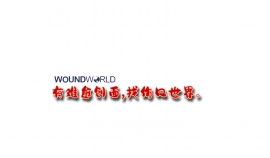
- 星期五, 14 4月 2023
A post-market cluster randomized controlled trial of the effect of the TENA SmartCare Change Indicator™ on urinary continence care efficiency and skin health in older nursing home residents
Muyibat Omotunde1 , Fredrik Agholme2 , Arne Böhling3 , Nicole Huige2 , Hardy Schweigel4 , Daniela Hayder‑Beichel5 , Robert Reidy6 and Adrian Wagg1 iD
*Correspondence:
Adrian Wagg
该Email地址已收到反垃圾邮件插件保护。要显示它您需要在浏览器中启用JavaScript。
1 Division of Geriatric Medicine, Department of Medicine, University of Alberta, Edmonton, AB, Canada
2 Essity Hygiene & Health AB, 405 03 Gothenburg, Sweden
3 Essity/BSN Medical GmbH, Schützenstraße 1‑3, 22765 Hamburg,Germany
4 Essity/BSN Medical GmbH, Schützenstraße 1‑3, 22761 Hamburg,Germany
5 Department of Health, Hochschule Neiderrhein-University of Applied Sciences, Reinarzstr 49, 47805 Krefeld, Germany
6 Staburo GmbH, Aschauer Strasse 26a, 81549 Munich, Germany
Abstract
Background Urinary continence care for residents of nursing homes who are unable to communicate their toileting needs usually involves care aides manually checking continence products (pads) to determine the level of urine saturation prior to changing. The TENA SmartCare Change Indicator is a medical device which estimates urine saturation and notifies caregivers of the optimal time for pad changes. This study will seek to examine the effect of the TENA SmartCare Change Indicator on urinary continence care efficiency and skin health, in comparison to usual care.
Methods This cluster randomized controlled trial (NCT05247047) involving older nursing home residents with urinary incontinence unable to consistently indicate their toileting needs, and their care aides, will compare technologybased and usual continence care over a period of 8 weeks. Co-primary endpoints of superiority in continence care efficiency and non-inferiority in the maintenance of skin health will be assessed. Secondary outcomes will examine the resident quality of life, sleep quality, responsive behaviours, changes in pad use and leakage episodes outside the pad. Change in care aide work engagement, job satisfaction and rushed tasks will be assessed. Benefits and challenges with the use of the device for continence care will be identified from the perspectives of the care staff.
Discussion Urinary continence assessment and care in nursing homes is reported as suboptimal and threatening to dignity. Data on the utility and effect of technological solutions for improving urinary continence care are few and conflicting. If shown effective, this technological solution has the potential to improve the care for older residents and improve the working lives of caregiving staff who look after this most vulnerable section of the population.
Trial registration ClinicalTrials.gov NCT05247047. Registration date is Feb 18, 2022
Keywords Caregivers, Care aide continence care, Residents, Older adults, Nursing homes (long-term care facilities), TENA SmartCare Change Indicator, Medical device, Urinary incontinence, Digital health technology
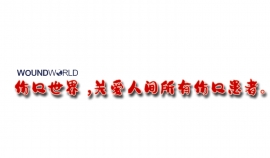
- 星期三, 12 4月 2023
Tcf7l2 in hepatocytes regulates de novo lipogenesis in diet-induced non-alcoholic fatty liver disease in mice
Da Som Lee1,2 iD Tae Hyeon An2,3 iD Hyunmi Kim2,3 iD Eunsun Jung4 iD Gyeonghun Kim5 iD Seung Yeon Oh6 iD Jun Seok Kim7 iD Hye Jin Chun8 iD Jaeeun Jung9 iD Eun-Woo Lee2,3 iD Baek-Soo Han3,10 iD Dai Hoon Han11 iD Yong-Ho Lee8,12 iD Tae-Su Han3,4 iD Keun Hur13 iD Chul-Ho Lee3,14 iD Dae-Soo Kim9 iD Won Kon Kim2,3 iD Jun Won Park15 iD Seung-Hoi Koo7 iD Je Kyung Seong5,6 iD Sang Chul Lee2,3 iD Hail Kim1 iD Kwang-Hee Bae2,3 iD Kyoung-Jin Oh2,3
Da Som Lee, Tae Hyeon An and Hyunmi Kim contributed equally to this study.
Received: 7 September 2022 /Accepted: 28 November 2022 / Published online: 10 February 2023
© The Author(s) 2023
Abstract
Aims/hypothesis Non-alcoholic fatty liver disease (NAFLD) associated with type 2 diabetes may more easily progress towards severe forms of non-alcoholic steatohepatitis (NASH) and cirrhosis. Although the Wnt effector transcription factor 7-like 2 (TCF7L2) is closely associated with type 2 diabetes risk, the role of TCF7L2 in NAFLD development remains unclear. Here, we investigated how changes in TCF7L2 expression in the liver affects hepatic lipid metabolism based on the major risk factors of NAFLD development.
Methods Tcf7l2 was selectively ablated in the liver of C57BL/6N mice by inducing the albumin (Alb) promoter to recombine Tcf7l2 alleles floxed at exon 5 (liver-specific Tcf7l2-knockout [KO] mice: Alb-Cre;Tcf7l2f/f). Alb-Cre;Tcf7l2f/f and their wildtype (Tcf7l2f/f) littermates were fed a high-fat diet (HFD) or a high-carbohydrate diet (HCD) for 22 weeks to reproduce NAFLD/ NASH. Mice were refed a standard chow diet or an HCD to stimulate de novo lipogenesis (DNL) or fed an HFD to provide exogenous fatty acids. We analysed glucose and insulin sensitivity, metabolic respiration, mRNA expression profiles, hepatic triglyceride (TG), hepatic DNL, selected hepatic metabolites, selected plasma metabolites and liver histology.
Results Alb-Cre;Tcf7l2f/f essentially exhibited increased lipogenic genes, but there were no changes in hepatic lipid content in mice fed a normal chow diet. However, following 22 weeks of diet-induced NAFLD/NASH conditions, liver steatosis was exacerbated owing to preferential metabolism of carbohydrate over fat. Indeed, hepatic Tcf7l2 deficiency enhanced liver lipid content in a manner that was dependent on the duration and amount of exposure to carbohydrates, owing to cell-autonomous increases in hepatic DNL. Mechanistically, TCF7L2 regulated the transcriptional activity of Mlxipl (also known as ChREBP) by modulating O-GlcNAcylation and protein content of carbohydrate response element binding protein (ChREBP), and targeted Srebf1 (also called SREBP1) via miRNA (miR)-33-5p in hepatocytes. Eventually, restoring TCF7L2 expression at the physiological level in the liver of Alb-Cre;Tcf7l2f/f mice alleviated liver steatosis without altering body composition under both acute and chronic HCD conditions.
Conclusions/interpretation In mice, loss of hepatic Tcf7l2 contributes to liver steatosis by inducing preferential metabolism of carbohydrates via DNL activation. Therefore, TCF7L2 could be a promising regulator of the NAFLD associated with highcarbohydrate diets and diabetes since TCF7L2 deficiency may lead to development of NAFLD by promoting utilisation of excess glucose pools through activating DNL.
Data availability RNA-sequencing data have been deposited into the NCBI GEO under the accession number GSE162449 (www.ncbi.nlm.nih.gov/geo/query/acc.cgi?acc=GSE162449).
Kyoung-Jin Oh 该Email地址已收到反垃圾邮件插件保护。要显示它您需要在浏览器中启用JavaScript。
Hail Kim 该Email地址已收到反垃圾邮件插件保护。要显示它您需要在浏览器中启用JavaScript。
Kwang-Hee Bae 该Email地址已收到反垃圾邮件插件保护。要显示它您需要在浏览器中启用JavaScript。
Keywords Carbohydrate . De novo lipogenesis . Fatty acid . Glucose . Insulin . Lipogenesis . NAFLD . TCF7L2 . TG accumulation . Type 2 diabetes
Extended author information available on the last page of the article
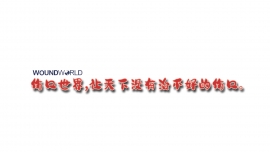
- 星期二, 11 4月 2023
象皮生肌膏对压疮模型大鼠 创面愈合的影响及其作用机制研究
彭 露1 ,廖若夷2 ,唐 燕3 ,高子琪1 ,佀惠婕1 ,刘 彬2 ,郭 元2
(1. 湖南中医药大学,湖南 长沙,410208; 2. 湖南中医药大学第一附属医院,湖南 长沙,410007; 3. 湖南中医药大学第二附属医院,湖南 长沙,410005)
[摘要]目的:探讨象皮生肌膏对压疮模型大鼠创面愈合的影响及其作用机制。方法:将72只大鼠随机分为空白组、模型组、湿润烧伤膏组、象皮生肌膏组,每组各18只。空白组不予造模,其余3组建立川期、IV期压疮模型。造模成功后空白组与模型组给予0. 9%氯化钠注射液冲洗,湿润烧伤膏组给予湿润烧伤膏外用,象皮生肌膏组给予象皮生肌膏外用。干预14d。于干预第3、7、14天观察创面愈合率,组织病理情况,白细胞介素-6(IL-6)、肿瘤坏死因子-ax(TNF-a)、血管内皮生长因子( VEGF)水平,p38丝裂原激活的蛋白.激酶( p38MAPK)、MAPK激活蛋白激酶2(MK2)蛋白表达情况。结果:与模型组比较,湿润烧伤膏组、象皮生肌膏组治疗第3、7、14天创面愈合率均升高(P<0.05)。组织病理结果显示,治疗第14天,模型组可见少量毛细血管,湿润烧伤膏组、象皮生肌膏组可见大量成纤维细胞,毛细血管丰富。湿润烧伤膏组、象皮生肌膏组治疗第3、7、14天IL-6、TNF -x、VEGFp38MAPK蛋白、MK2蛋白含量与模型组比较,差异均有统计学意义(P<0.05)。象皮生肌膏组治疗第7、14天IL-6含量及第7天TNF-x、VEGF含量与湿润烧伤膏组比较,差异均有统计学意义(P<0.05)。结论:象皮生肌膏能促进压疮创面修复,其作用机制可能与抑制p38MAPK MK2蛋白表达,减少IL-6、TNF-a释放、调控VEGF合成有关。
[关键词]压疮 ;象皮生肌膏;大鼠;L-6;TNF-a; VEGF ;p38MAPK;MK2
[中图分类号]R285.5
[文献标识码]A
DOI: 10.16808/j. cnki. issn 1003-7705.2023.02.040
Effect of Xiangpi Shengji ointment on wound healing in a rat model of pressure ulcers and its mechanism of action PENG Lu',LIAO Ruoyi2 ,TANG Yan’, GAO Ziqi',SI Huijie' ,LIU Bin2 ,GUO Yuan
( 1. Hunan University of Chinese Medicine , Changsha 410208 , Hunan, China;2. The First Affiliated Hospital of Hunan University of Chinese Medicine,Changsha 4 10007 , Hunan , China; 3. The Second Affiliated Hospital of Hunan University of Chinese Medicine , Changsha 4 10005, Hunan,China)
[ Abstract] Objective :To investigate the effect of Xiangpi Shengji ointment on wound healing in a rat model of pressure ulcers and its mechanism of action. Methods:A total of 72 rats were randomly divided into blank group, model group , Shirun Shaoshang ointment group,and Xiangpi Shengji ointment group , with 18 rats in each group. The rats in the blank group were not used for modeling , and those in the other groups were used to establish a model of stage IHI/IV pressure ulcers. After successful modeling, the rats in the blank group and the model group were given irrigation with 0. 9% sodium chloride injection, those in the Shirun Shaoshang ointment group were given the external application of Shirun Shaoshang ointment , and those in the Xiangpi Shengji ointment group were given the external application of Xiangpi Shengji ointment. Intervention was given for 14 days. Related indicators were observed on days 3,7,and 14 of intervention , including wound healing rate , histopathology,the levels of interleukin-6 (IL-6) , tumor necrosis factor-a ( TNF-a) , and vascular endothelial growth factor ( VEGF),and the protein expression levels of p38 mitogen -activated protein kinase ( p38MAPK) and MAPK-activated protein kinase 2 ( MK2). Results : Compared with the model group , the Shirun Shaoshang ointment group and Xiangpi Shengji ointment group had a significant increase in wound healing rate on days 3, 7,and 14 of treatment ( P<0. 05 ). Histopathology results showed that on day 14 of treatment , the model group had a small number of capillaries , while the Shirun Shaoshang ointment group and Xiangpi Shengji ointment group had a large number of fibroblasts and abundant capillaries. On days 3,7, and 14 of treatment , there were significant differences in the content of IL-6,TNF-a, VEGF , p38MAPK protein , and MK2 protein between the Shirun Shaoshang ointment/ Xiangpi Shengji ointment group and the model group ( P<0.05). There were significant differences between the Xiangpi Shengji ointment group and the Shirun Shaoshang ointment group in the content of IL-6 on days 7 and 14 and the content of TNF-a and VEGF on day 7 ( P<0. 05 ). Conclusion :Xiangpi Shengji ointment can promote wound repair of pressure ulcers, possibly by inhibiting the protein expression of p38MAPK and MK2 , reducing the release of IL-6 and TNF -x, and regulating the synthesis of VEGF.
[ Keywords ] pressure ulcers ; Xiangpi Shengji ointment ; rat ; interleukin -6 ; tumor necrosis factor- a ; vascular endothelial growth factor ;p38 mitogen- activated protein kinase ;MAPK- activated protein kinase 2
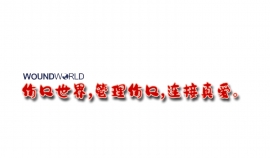
- 星期一, 10 4月 2023
象皮粉治疗烧伤后慢性瘢痕溃疡 1 例
罗浩铭1 ,魏子人2 ,白钦钦3 ,徐涛1 ,胡俊1 ,唐平1 ,黄国宝4 ,王金晶4 ,盛健峰1*(1. 绵阳市第三人民医院·四川省精神卫生中心甲状腺头颈颌面外科,四川 绵阳 621054;2. 绵阳市人民医院烧伤整形外科,四川 绵阳 621000;3. 贵州医科大学附属医院儿科,贵阳 550004;4. 济南市中心医院烧伤整复外科,济南 250013)
作者简介:罗浩铭,男,住院医师,主要从事烧伤、慢性创面和头颈部常见病的治疗,email:该Email地址已收到反垃圾邮件插件保护。要显示它您需要在浏览器中启用JavaScript。
* 通信作者:盛健峰,男,副主任医师,硕士研究生导师,主要从事甲状腺疾病、头颈部及颌面部肿瘤的防治,email:1078388932@
qq.com
关键词:瘢痕溃疡;象皮粉;创面愈合;Marjolin 溃疡
中图分类号:R96 文献标识码:A 文章编号:1672-2981(2022)10-2448-03 doi:10.7539/j.issn.1672-2981.2022.10.043
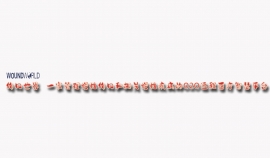
- 星期一, 10 4月 2023
中西医结合防治糖尿病足中国专家共识( 精简版)
【执行编委导读】肢体血管疾病相关性慢创,临床表现为肢体的慢性难愈性溃疡,但本质上与周围血管疾病密切相关, 其典型病种包括糖尿病足溃疡( 脱疽) 、下肢静脉性溃疡( 臁疮) 等。该类疾病发病率高,发达国家 60% 的新发肢体溃疡与周围 动脉病变有关,我国糖尿病患者 1 年内新发足溃疡率高达 8. 1% ; 疾病后果严重,仅以糖尿病足为例,总截肢率为 19. 03% , 而截肢患者的 1 年生存率甚至比大多数恶性肿瘤患者更低。该类疾病的诊疗过程,需要多学科团队合作才能完成,具体体现为: 血管外科技术与创面修复技术的合作,西医手术与中医外治法的合作等,该病的诊疗是临床研究的热点和难点问题。本期专题,发布了 《中西医结合防治糖尿病足中国专家共识( 精简版) 》( 以下简称 《共识》) ,《共识》由中国中西医结合学会周围血管病专业委员会牵头,组织国内 40 余名相关学科的一线专家执笔,历经 10 余轮讨论,耗时 3 年完成,包括定义、伴随疾患、分级分型、筛查预防、治疗五大板块。《共识》的制定,体现了中西医结合理念,重视学科的开放性和全面性、内容的权威性、临床参考的实用性、糖尿病足的预防和营养支持,以及疾病的整体观。同时,专题还邀请了黑龙江中医药大学附属第一医院李令根团队、北京中医药大学东直门医院杨博华 - 鞠上团队、洛阳市中医院何春红团队、北京市宣武中医医院郭娴团队等中西医结合周围血管病领域的知名专家,从名老中医经验传承及中医外治法创新等层面撰稿,展示中西医结合防治肢体血管疾病相关性慢创的优势。期待通过本专题的举办,进一步促进中西医结合治疗肢体血管疾病相关性慢创的研究,规范和拓展中西医结合诊疗技术在该病种防治过程中的应用。
( 北京中医药大学东直门医院 杨博华、鞠上) (中国中西医结合学会周围血管病专业委员会)
通信作者: 杨博华,E-mail: yangb5191@ sina. com; 鞠上,E-mail: juuncle@ 163. com
【关键词】糖尿病足; 中西医结合; 专家共识 DOI: 10. 16025 /j. 1674-1307. 2019. 11. 007
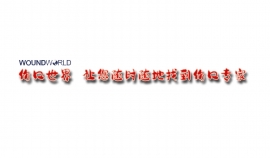
- 星期五, 07 4月 2023
Skeletal muscle and intermuscular adipose tissue gene expression profiling identifies new biomarkers with prognostic significance for insulin resistance progression and intervention response
Dominik Lutter1,2 ● Stephan Sachs3 ● Marc Walter2,3 ● Anna Kerege4 ● Leigh Perreault 4 ● Darcy E. Kahn4 ● Amare D. Wolide1,2,5 ● Maximilian Kleinert 2,6,7 ● Bryan C. Bergman4 ● Susanna M. Hofmann2,3,8
Received: 15 July 2022 /Accepted: 6 December 2022 / Published online: 15 February 2023 © The Author(s) 2023
Abstract Aims/hypothesis Although insulin resistance often leads to type 2 diabetes mellitus, its early stages are often unrecognised, thus reducing the probability of successful prevention and intervention. Moreover, treatment efficacy is affected by the genetics of the individual. We used gene expression profiles from a cross-sectional study to identify potential candidate genes for the prediction of diabetes risk and intervention response.
Methods Using a multivariate regression model, we linked gene expression profiles of human skeletal muscle and intermuscular adipose tissue (IMAT) to fasting glucose levels and glucose infusion rate. Based on the expression patterns of the top predictive genes, we characterised and compared individual gene expression with clinical classifications using k-nearest neighbour clustering. The predictive potential of the candidate genes identified was validated using muscle gene expression data from a longitudinal intervention study.
Results We found that genes with a strong association with clinical measures clustered into three distinct expression patterns. Their predictive values for insulin resistance varied substantially between skeletal muscle and IMAT. Moreover, we discovered that individual gene expression-based classifications may differ from classifications based predominantly on clinical variables, indicating that participant stratification may be imprecise if only clinical variables are used for classification. Of the 15 top candidate genes, ST3GAL2, AASS, ARF1 and the transcription factor SIN3A are novel candidates for predicting a refined diabetes risk and intervention response.
Conclusion/interpretation Our results confirm that disease progression and successful intervention depend on individual gene expression states. We anticipate that our findings may lead to a better understanding and prediction of individual diabetes risk and may help to develop individualised intervention strategies.
Keywords Computational health . Diabetes subtypes . Glucose intolerance . Insulin resistance . Intermuscular adipose tissue . Obesity . Personalised medicine . Response to treatment prediction . Type 2 diabetes
Dominik Lutter 该Email地址已收到反垃圾邮件插件保护。要显示它您需要在浏览器中启用JavaScript。
* Susanna M. Hofmann 该Email地址已收到反垃圾邮件插件保护。要显示它您需要在浏览器中启用JavaScript。
1 Computational Discovery Research, Institute for Diabetes and Obesity (IDO), Helmholtz Diabetes Center (HDC), Helmholtz Zentrum München – German Research Center for Environmental Health, Neuherberg, Germany
2 German Center for Diabetes Research (DZD), Neuherberg, Germany
3 Institute for Diabetes and Regeneration (IDR-H), Helmholtz Zentrum München – German Research Center for Environmental Health, Neuherberg, Germany
4 University of Colorado Anschutz Medical Campus, Aurora, CO, USA
5 Division of Metabolic Diseases, Department of Medicine, Technische Universität München (TUM), Munich, Germany
6 Drug Development Unit, Institute for Diabetes and Obesity (IDO), Helmholtz Diabetes Center (HDC), Helmholtz Zentrum München – German Research Center for Environmental Health, Neuherberg, Germany
7 Group of Muscle Physiology and Metabolism, German Institute of Human Nutrition, Potsdam-Rehbruecke (DIfE), Nuthetal, Germany
8 Department of Medicine IV, University Hospital, LMU Munich, Munich, Germany
